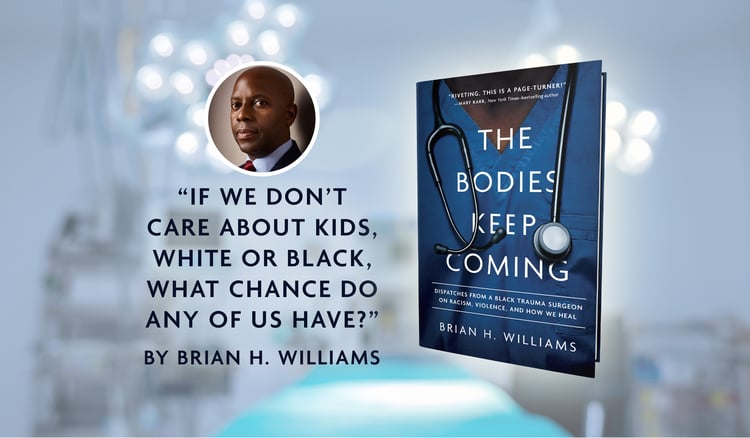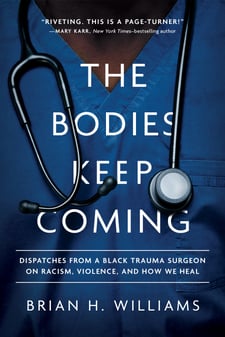CW: Mass shootings, police violence, gun violence
“Because I didn’t want to get shot!” I looked at Kathianne incredulously, stating what I felt should be obvious. She tossed her head and rolled her eyes in disbelief.
“Oh, come on. Be real. You don’t have to show them your ID. This is your house!”
“Apartment.”
“You know what I mean,” she fired back. “You live here!”
“Oh, please, Kats. That doesn’t mean jack. Cops have killed Black folks for much less.”
A few days earlier, I had been standing outside the door to our building, wearing designer denim jeans and an Air Force Academy athletic pullover. It was snowboarding season, and my gear lay on the concrete beside me while I waited for my ride to the airport. We had recently moved to Dallas, Texas, and I was eager to get to Colorado for a weekend on the slopes. Engrossed in the ski and snow report on my cell phone, I did not notice the Dallas police cruiser roll to a stop and two uniformed officers step out.
At first, I paid no attention to the man and woman in blue uniforms with shiny badges and lethal weapons as they approached. I had done nothing wrong, and I lived right there. Once I realized what was happening, my throat tightened and my heart pounded and I stood frozen and straight. I knew the encounter could turn deadly even if I did everything right. One officer flanked me, blocking any escape route—not that I intended to run. I knew better. The other officer came from the front and asked to “see some identification.” I didn’t even think twice before slowly reaching into my back pocket, pulling out my wallet, and handing over my driver’s license.
After a few tense minutes, the officer returned my license and said, “Thank you. We were just responding to a call. You’re free to go.” Finally, I could breathe; but my peace of mind was fleeting.
During the ride to Dallas-Fort Worth airport, I silently fumed. By that point in my life, I had done everything America asked me to do: I had graduated from a prestigious university, served my country, and become a doctor. And this was my thanks: cops rolling up on me for Standing While Black?
Days later, I learned more about the incident from an acquaintance who had access to the police report. He explained to me that someone had called 911 to report a “bald, Black man acting suspiciously.”
My temperature rose as I recounted the incident to Kathianne and as she tried to comprehend the story. At the time, we had been together eleven years, married for seven, and I had never before initiated a deep discussion about my fear of police. “I am your wife,” she now said. “How could I not know you felt this way?” It was true: I had never told her about being spread-eagle as an Air Force officer, or stopped late at night in Alabama when driving to visit my sister, or stopped during the day in Virginia while visiting my parents. Day or night, east coast or west coast, north or south, my distrust of police knew no boundaries. I feared cops more than I feared random acts of violence.
So I took precautions. My car displayed a United States Air Force Academy alumni license plate, my driver’s license was stamped with “Veteran” (and organ donor), and I usually had my hospital badge draped around my neck while driving. Visible items to broadcast, “No need to fear me, Officer.” So when the police officer asked to see my ID, I did not ask why. Nor did I assert my right to refuse, as my wife suggested I should have done.
Sometimes your survival instinct compels you to simply comply.
Just over a year prior, we had shoehorned our life into the back of a royal blue Mini Cooper and made the cross-country drive from Atlanta to begin the next phase of our life in Dallas. I was to begin my dream job as an assistant professor of trauma and acute care surgery at the University of Texas Southwestern Medical School and as an attending trauma surgeon at Parkland Memorial Hospital. As a graduation gift to myself to celebrate thirteen years of medical training, I bought myself a Rolex. I had always wanted a nice watch, and after years of buying throwaway timepieces, I now owned a timeless classic I could pass along as an heirloom. And to extend the celebration a bit, we took several days to drive leisurely from Georgia to Texas, connecting the interstate dots through Alabama, Mississippi, and Louisiana.
We were aware that an interracial couple like us, doing such a trek a few decades prior, would have been tempting deadly fate. In the arc of American history, we lived only a blip away from the Jim Crow era, when Black Americans used the Green Book, first published in 1936, to navigate safe places to eat and sleep when traveling. And, of course, our marriage would have been illegal in the many states with anti-miscegenation laws until 1967, when the Supreme Court ruled them unconstitutional in Loving v. Virginia. That was just two years before my birth.
We arrived in Dallas safely, settled in, and were soon enjoying high-rise living with concierge service in an upscale section of the city. Our neighborhood had once been a thriving Black community known as Freedman’s Town. Founded by formerly enslaved Black Texans, the town was leveled to make way for two major highways linking downtown to the rest of Dallas. The displacement of Black Americans was a pattern replicated across the nation, as part of President Eisenhower’s effort to create an interstate highway system.
Planners routed some highways through Black and brown communities to further a segregationist agenda. Deborah N. Archer explains in her article “White Men’s Roads through Black Men’s Homes” in the Vanderbilt Law Review, “In states around the country, highway construction displaced Black households and cut the heart and soul out of thriving Black communities as homes, churches, schools, and businesses were destroyed. In other communities, the highway system was a tool of a segregationist agenda, erecting a wall that separated White and Black communities and protected White people from Black migration. In these ways, construction of the interstate highway system contributed to the residential concentration of race and poverty, and created physical, economic, and psychological barriers that persist.”
In Dallas, gentrification followed the highway, land value rising in tandem with real estate prices. All that remains of Freedman’s Town today are unmarked gravestones and a memorial recognizing formerly enslaved people. The memorial was a ten-minute walk from my front door.
Three years later, we moved into a four-bedroom, five-bathroom, three-thousand-square-foot house. Although we became close to our neighbors, I was cognizant of being the only Black person in the neighborhood. When we lived uptown, I’d be up before dawn for an early morning run or would take an evening stroll by the park after work. I stopped both routines after we moved. In fact, the idea of taking a dawn run or evening walk in the neighborhood where I owned a home never crossed my mind. I knew I had to be careful lest I be found guilty of being Black in a white neighborhood.
The year 2012, when police questioned me for standing outside my apartment building, was a notable year for gun violence. In February, George Zimmerman, a wannabe cop, shot and killed Trayvon Martin, an unarmed seventeen-year-old walking home one evening to his father’s house. In April, a gunman killed seven at Oikos University in Oakland, California; in July, a gunman killed twelve and injured fifty-eight more at an Aurora, Colorado, movie theater. One month later came another mass shooting of six worshipers at a Sikh Temple in Oak Creek, Wisconsin. And that’s not an exhaustive list.
Then came December 14, 2012. Adam Lanza shot and killed his mother before fatally shooting twenty children, most of whom were six and seven years old, and six adults at Sandy Hook Elementary School in Newtown, Connecticut. Shock, grief, and a call to action followed. It was a moment when our nation could address the epidemic of gun violence, and we failed. An attempt to pass meaningful federal gun safety legislation withered on the vine, kneecapped by lobbying from the National Rifle Association.
Throughout those years I felt horrified at the scope of mass school shootings, which were often perpetrated by white shooters in suburban and mostly white school districts. I was also dismayed that the lives and deaths of my Black and brown patients, victims of gun violence, never received the same level of collective national attention. If we showed such little regard for the health and safety of white suburban children, I knew there was no chance for my patients, who were mostly urban Black boys and girls. And if we don’t care about kids, white or Black, what chance do any of us have?
This is an excerpt from The Bodies Keep Coming chapter 7, “Bald, Black, and Suspicious."




